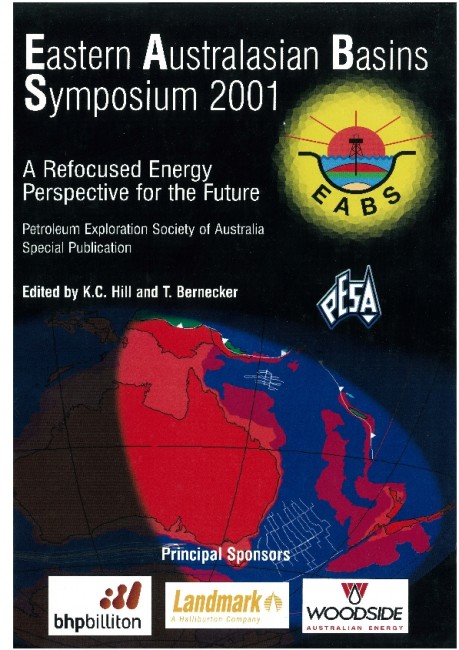Publication Name: Eastern Australian Basins Symposium 2001
Authors: H.I.M. Struckmeyer, J.M. Totterdell, J.E. Blevin, G.A. Logan, C.J. Boreham, I. Deighton, A.A. Krassay and M.T. Bradshaw
Date Published: November 2001
Number of Pages: 33
Reference Type: Magazine Article
Abstract:
The Ceduna Sub-basin of the Bight Basin is a frontier region containing only one petroleum exploration well. Therefore, our assessment of the distribution of potential source rocks in the area is based on an understanding of the regional sequence stratigraphic framework and the potential petroleum systems present, along with the regional palaeogeography and geochemical data from onshore and the adjacent Duntroon Basin. Studies carried out by AGSO - Geoscience Australia over the past three years suggest that the thick Cretaceous succession in the Ceduna Sub-basin contains a range of fluvio-lacustrine, deltaic and marine source rocks that have the potential to generate liquid hydrocarbons.Valanginian to Aptian fluvio-lacustrine source rocks of the Bronze Whaler supersequence include carbonaceous shales and coals. New geochemical analyses of samples from the onshore Gambanga-1 well show that lacustrine oil shales were also deposited in the Great Australian Bight region during the Early Cretaceous. Although the supersequence is widespread across the basin and contains significant amounts of organic matter, source quality is likely to vary markedly, depending on palaeoenvironment and depositional facies. Well data and
seismic facies indicate that potential source rocks within the Late Albian to Cenomanian Blue Whale and White Pointer supersequences were deposited in restricted marine, marginal marine and deltaic settings, and
include both marine condensed sections and coaly deposits. The coals have fair to good liquid potential, but only sparse data are available for the more marine rocks. The Turonian to Santonian Tiger supersequence was deposited during a period of high global sealevel and is thought to be a dominantly marine succession with the potential to include high quality source rocks.
Geohistory modelling using appropriate kinetic parameters was carried out for the Potoroo 1 well and three more basinward locations ('pseudo-wells') across the Ceduna Sub-basin, in order to assess the timing of generation and expulsion from the suite of interpreted source intervals. The time gap between generation and expulsion is typically short and thought to be due to the generally rapid deposition of the overburden, most significantly, the thick deltaic complexes of the Late Santonian to Maastrichtian Hammerhead supersequence. Valanginian to Aptian potential source rocks probably expelled both waxy and light oils during the early Late Cretaceous, although expulsion continued into the Tertiary in the more inboard parts of the basin. Albian to Santonian source intervals probably generated mostly light oils with expulsion occurring during the Campanian to Recent, although in the inboard parts of the basin the youngest source rocks are immature for oil generation.


